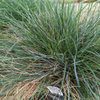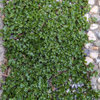Stethorus beetles, nicknamed the spider mites destroyer.
Background Information:
Anyone who has knowledge about or experience with spider mites will know that they are extremely difficult to control/eradicate as they develop resistance to chemical controls very quickly, rendering them useless against this serious pest. They reproduce rapidly and can spread easily by wind, garden materials or simply hitch hiking on your clothes. They will inflict serious damage to your plants and will very often kill them. Many plants such as daturas are constantly infested with spider mites. Spider mite infestations are most serious under hot and dry conditions i.e. during summer.
Nicknamed the spider mites destroyer, the stethorus beetle is used as a biological control for spider mites. These tiny black beetles have a huge appetite for spider mites and consume twice the amount of spider mites compared to predatory mites. They are usually more expensive than predatory mites and are used when spider mites populations are high. Each beetle or larvae eats about 25-80 mites a day and their life cycle is about 40 days. They have been reported to be efficient in seeking out spider mite colonies both indoor and outdoor. Each female beetle is capable of laying about 100 eggs in her lifetime. No wonder often when I look at them they are having sex! Both the larvae and adult beetles feed on all stages of the spider mites and their eggs. Stethorus beetles should be released into the most severe spider mite infestation or �hot spot� as soon as you received them to help the population establish. Make sure your plants are free from pesticides as they will kill the beetles as well.
So do away with the problems of trying to achieve complete coverage of both sides of the leaves when spraying for spider mites, repeat spraying and then coming into resistance problems. Let the beetles hunt down the spider mites and their eggs for you while you sit back and watch them do the work for you and reproduce.
You may wish to google for �stethorus� or �spider mite destroyer� for more information on the internet.
Please feel free to correct me if there's any wrong information.
Personal Experience:
I have been using chemicals for about 20 years. From my experience, the first few times with chemicals were very successful, but after that, it was an uphill battle as they became more resistant. They kept coming and spraying became more tedious and expensive even with chemical rotations. As far as I'm concerned, they damage plants faster and harder than other pests. It got so bad to the point that I avoided growing plants that are prone to spider mites in the garden. However plants in Melbourne can be very stressed out with our erratic weather so many became susceptible to spider mites attack as they became weaken by the tough growing conditions. Eventually I found other plants also got affected by spider mites. Like wild bush fires, it was out of control - everywhere in the garden, one infestation after another. And they spread easily to my indoor plants. Don't fall into a situation where you controlled a minor pest easily using chemicals but end up with a population explosion of a major persistent pest which causes more severe damage.
Now it is a different story. I even grow plants that attract spider mites to keep the beetles going so they can keep controlling the mites. Yes, you kill the beetles when you spray for the other easier to control insects, but once the dust settles, the beetles spread back to the sprayed plants from those that were not sprayed. The way I see it is that instead of me doing the hard work attacking the spider mites with poison which they easily overcome, I now have an army which will multiply and seek out the pests, keeping damage to minimal. 100% eradication or perfection goes against nature, that is why it makes things harder.
I tried using predatory mites, but their requirements are more specific. Also because of their small size and specific diet on specific species of mites, they are harder to maintain. For example, Phytoseiulus persimilis attacks mainly two spotted mites, and I once thought all spider mites were two spotted mites until I ordered a microscope and observed them closer. Both predatory and pest mites are hard to monitor because of their microscopic size. Beetles are much more adaptable to different conditions because of their tough outer covering. They are also much less selective of the species of mites that they eat. Best of all, you can see and know that they are there without the aid of eye-straining microscope required to observe predatory mites properly.
Have:
Small quantities of beetles. Location: Melbourne. facebkm at hotmail








Kimmsr
taz6122
Related Discussions
Dwarf Alberta Spruce problem
Q
Organic Insect Control in the Home Landscape
Q
The spider mites destroyer: stethorus beetles
Q
Clearing out the garden bed of death!
Q